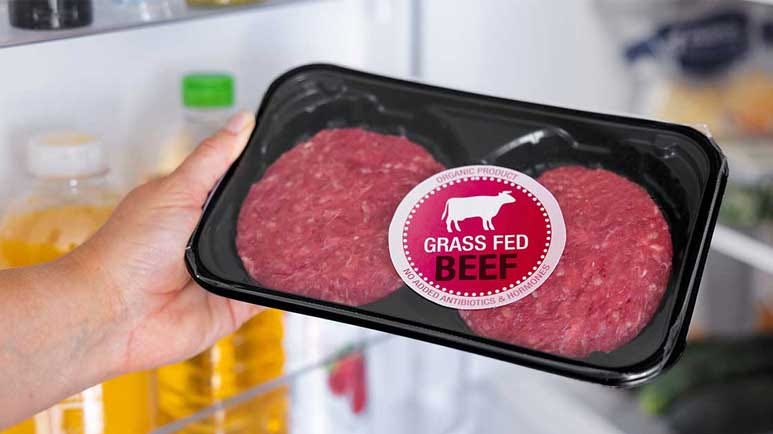How to Spot Fake Grass Fed Beef and Find the Real Thing
Description
STORY AT-A-GLANCE
Some beef labels that simply say “grass fed” often still involve grain finishing; only “100% grass fed” and “grass-finished” with certification ensure a lifetime forage diet
The American Grassfed Association (AGA) sets the strongest standard, requiring pasture raising, no feedlot confinement, and independent audits
Organic beef is not the same as grass fed — organic animals can still be finished on organic grain
Grass-finishing improves nutrient density, boosting omega-3s, CLA, and phytochemicals, while grain finishing reduces these health-promoting compounds
Shoppers can avoid fake grass fed beef by using a 10-point checklist, asking butchers direct questions, and checking the AGA producer directory

When buying meat for their pot roasts or burgers, many people who consider themselves smart shoppers would often check the label and grab the brand that has the words “grass fed” stamped on it. After all, when you think of grass fed, you usually envision a cow roaming around in an open pasture, eating nothing but its natural diet of grass.
But the truth is that the label doesn’t always tell the whole story. In fact, there are some stealthy beef producers that call their product “grass fed” — even if the animal was given pellets or placed in confinement before slaughter, marking a big difference in both quality and nutrition.1 This is why it’s important to know how to spot the difference between real grass fed beef and the fake versions that rely on clever marketing.
What Does ‘Grass Fed’ Really Mean?
When you see the words “grass fed” stamped on a package of beef, it’s natural to picture cattle grazing peacefully on open pastures from birth to harvest. That image sells, but the reality is far more complicated.
The Food Safety and Inspection Service (FSIS), which is responsible for approving meat labels in general, “considers Grassfed, Grass Fed and Grass-Fed synonymous terms.” They state that these claims can only be used on meats that were “derived from cattle that were only (100%) fed grass (forage) after being weaned from their mother’s milk.”2
However, FSIS verifies claims only by reviewing documentation and records at federally inspected establishments/plants — not by routine on-farm inspections — It does strongly encourage independent third-party certification to validate on-farm practices. However, they only review the paperwork to ensure it is not “misleading.”3
<label class="hide-text" contenteditable="false">Text within this block will maintain its original spacing when published</label>Since the agency only relies on documentation provided by the producer, inspectors do not travel to farms to confirm feeding practices, nor do they verify whether cattle consumed forage throughout their entire lifespan. This leaves producers with significant leeway in how they present their beef, and consumers often end up paying premium prices for meat that doesn’t match the pastoral picture in their minds.
Historically, the USDA had a formal definition for grass fed beef — However, that standard was withdrawn in 2016, shifting the responsibility for verification onto private companies and certifiers. Since then, the marketplace has become a patchwork of claims, some meaningful and others little more than marketing.4
Without strong oversight, the phrase “grass fed” can cover a wide range of practices — These can cover anywhere from cattle raised almost entirely on pasture to animals fed grain in confinement during their final months. That finishing period is actually vital, as switching to grain before slaughter alters the nutritional profile, reduces beneficial fatty acids, and compromises the integrity of the label.
For anyone trying to make informed choices, two label distinctions matter above all else — First, “100% grass fed” indicates the animal consumed forage for its entire life, with no exceptions. In contrast, a label that simply says “grass fed” could describe an animal that grazed early on but was grain-finished in a feedlot.
<label class="hide-text" contenteditable="false">Text within this block will maintain its original spacing when published</label>Second, the phrase “grass-finished” explicitly guarantees that the final stage of feeding was also forage-based, closing the loophole many producers use to market beef as grass fed while still relying on grain to accelerate fattening before harvest.5
Independent certification adds weight to these claims — The American Grassfed Association (AGA) has set the most rigorous standard in the U.S. To carry the AGA seal, cattle need to be raised on a 100% forage diet for their entire lives, remain on pasture without confinement feedlots, and never receive antibiotics or added hormones. Audits confirm compliance, and farms that fail to meet the standard cannot use the logo.
<label class="hide-text" contenteditable="false">Text within this block will maintain its original spacing when published</label>This level of transparency is rare, which is why AGA certification is considered the strongest assurance that “grass fed” actually means what consumers believe it does.6
Without the clarity of “100%,” a “grass-finished” designation, and third-party verification, the term “grass fed” can mean very little. That’s the uncomfortable truth — unless you know exactly what to look for, you may be paying for an image rather than the reality behind your beef.
Quick Checklist — 10 Ways to Verify Real Grass Fed Beef
Choosing beef labeled “grass fed” is not as simple as grabbing the first package that catches your eye. Marketing terms are designed to look reassuring, but without digging into the details, you could end up buying fake grass fed beef that was grain-finished or raised under practices that don’t align with what you expect. This 10-point checklist helps you cut through the noise and confirm authenticity before you spend your money.
Look for “100% grass fed” — A label that only says “grass fed” without additional details is not enough. As TruBeef Organic points out, the animal could have grazed early on and then been grain-finished before slaughter. The phrase “100%” signals a lifetime diet of forage and is the strongest starting point for trust.
Confirm “grass-finished” or “finished on forage only” — The finishing






